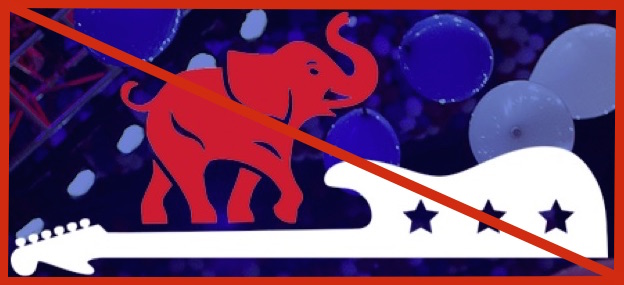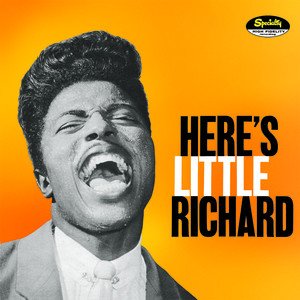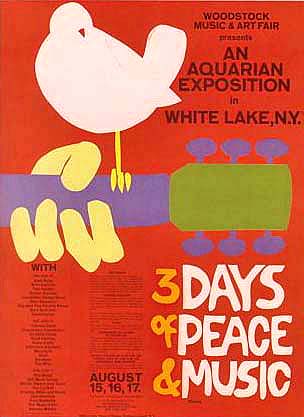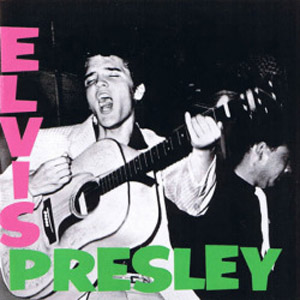
A. D. Coleman as Donald Trump, selfie, 3-16-16
In comparison to the months between last July and this past January, I have found the late winter and spring of 2016 a surprisingly slow period for potent, impactful visual images relating to the campaigns and the candidates. Aside from the visual self-presentation of the candidates themselves, we’ve had slim pickings indeed.
In my self-appointed role as dedicated collector of and commentator on such visual phenomena, I have had to settle for such relatively tame moments as these:
- Vintage news footage of Bernie Sanders getting arrested in Chicago in 1963, for participating in an anti-segregation protest;
- Bernie Sanders getting visited by a little bird at his podium in Portland, OR, on March 25, 2016 (sparking the hashtag #BirdieSanders);
- The anti-Trump super PAC Make America Awesome running a Facebook ad targeting Mormon voters featuring an image of Melania Trump posing naked, encouraging them to vote for Ted Cruz;
- Trump retaliating by tweeting juxtaposed images of Cruz’s wife Heidi and Melania, unflattering to Ms. Cruz;
- The Cruz campaign first posting and then quickly pulling a 30-second anti-Marco Rubio ad titled “Conservatives Anonymous,” featuring soft-core porn star Amy Lindsay. (To watch the ad, click on the link above.)
- Trump tweeting a photo of himself in his office on Cinco de Mayo, lunching on a taco bowl while proclaiming his love of “Hispanics”;
- Marco Rubio calling out Trump on his “small hands”;
- assorted protesters getting roughed up and even sucker-punched at Trump rallies;
- and Congressional candidate Rick Tyler’s Trump-inspired “Make America White Again” billboards in eastern Tennessee. Tyler, who believes that “the Caucasian race [are] the architects and progenitors of advanced civilization and high cultures,” told WRCB “he just wants America to go back to a ‘1960s, Ozzie and Harriet, Leave it to Beaver time when there were no break-ins; no violent crime; no mass immigration.'”

Make America Awesome super PAC Facebook ad with Melania Trump, 2016
•

Donald Trump tweet, Heidi Cruz vs. Melania Trump, 3-23-16
Of these, only Rubio’s has shown any staying power as an image-making act. While not exactly a visual image, it has served very effectively to call attention to the proportions of Trump’s hands, the size of which has become a subject of frequent mention and mockery in the media. Subsequent to Rubio’s comment, I find myself looking at them every time I watch Trump speak — and not only because I find watching his face in motion unpleasant.
But the often violent hostility toward protesters displayed by Trump’s supporters, the racist components of his own rhetoric, and the unapologetic racism of so many of his followers, albeit quickly lost in the surge of events, contributes to an overall perception of the forces behind Trump as lily-white and unwelcoming to anyone but those like themselves. They have convinced themselves that they can win an election this way. I have to hope they’re wrong.
Elephants on Parade

Bernie Sanders with feathered friend, Portland, OR, 3-25-16, screenshot
I certainly expect that relative drought of notable imagery to end on Monday, July 18, when the Republic Party opens its 2016 convention in Cleveland. From all indications, the GOP promises us a raucous, indeed riotous spectacle — indeed, a battle royal between the incredibly shrinking moderate faction and the dominant forces that have earned the GOP the sobriquet of “the stupid party” (bestowed by one of its own luminaries).
I plan to watch the opening ceremony, and then as much of the ensuing extravaganza as I can stomach. My preparations: lots of homemade popcorn, and a tall glass of ice water with a slice of lemon. I will bookend each online visit to the debacle with a viewing of the classic sequence “Pink Elephants On Parade,” from Walt Disney’s 1941 feature film Dumbo. I anticipate that this will help me put the proceedings in perspective, and recommend it to you.

Walt Disney Studios, “Pink Elephants on Parade” sequence from “Dumbo” (1941), screenshot
•
While My Guitar Gently Weeps
The first image of the Republic Party’s 2016 National Convention that strikes me as significant actually preceded the opening of the convention by several months.

RNC logo 2016 (not)
The RNC logo merits a moment of our time for scrutiny. It offers us an elephant, the GOP symbol, high-stepping — indeed, almost dancing — across the distinctive neck of … yes, that is indeed a Fender electric guitar.
Surely this is more than a nod to wingnut racist homophobic Ted Nugent, to whose music I have heard no one refer for some 40 years, or an homage to the late “southern strategy” maven and avocational guitar player Lee Atwater, or a whimsical acknowledgment of Dubya getting down on an acoustic, or a reminder that House Speaker Paul Ryan has shown his with-it-ness by voicing an opinion on who gets to sing lead with AC/DC.
No, it means to signify. And if the signifier is that iconic guitar, the signified can only be that the Republic Party is not only in the 21st century, but that it’s hip, cool, bad, dope, cray, or whatever the slang superlative du jour may be.

“Here’s Little Richard,” Specialty LP (1957), cover
In short, it stakes out a claim: The Republic Party is the party of rock & roll — and, just like rock & roll, it “is here to stay — it will never die.”
Now that’s a bold assertion. Because the Republic Party has, with its current platform, adamantly refused to enter the 21st century. Indeed, though a mere three years removed from a remarkably frank “autopsy report” on what it did wrong in the 2012 campaign and how to fix it (“Growth and Opportunity Project,” commissioned by the Republican National Committee), this convention’s platform represents a refusal to modernize (much less to postmodernize) itself. Instead, the party’s leaders have doubled down on virtually everything that 2013 report pointed to as the causes of their back-to-back losses to Obama and the Dems. (You can download a PDF of this excellent report here, and download a pdf of the 2016 GOP platform here.) In effect, they’ve opted for a return to the late 1800s, well before the birth of the blues, half a century prior to the advent of rock.

Woodstock Festival poster, 1969
If something about this logo tickles your memory, that’s because it has a precursor: Woodstock. Yes, you heard that right: The Republic Party wants to claim its convention as the reincarnation of the Woodstock Festival of August 1969, hoping that some of the energy thereof (and the nostalgia it evokes) will rub off. This despite the fact that Woodstock symbolizes everything that the right wing despised then — not just sex, drugs, rock & roll but gender indeterminacy (all that long hair on men), racial integration, women’s lib, anti-war, anti-capitalism, you name it — and everything the right still despises today.
With one exception: rock & roll. Because you simply can’t plausibly present yourself as in tune with the American people nowadays without endorsing rock & roll. Some may have hoped back then that rock represented a mere musical fashion that would soon pass (my own father did, considering it — jeans too — nothing more than a fad), but 47 years later rock has established itself as a permanent feature of the global cultural landscape. So, even though they’re not much good at it, the Republic Party has to embrace rock & roll. Hence the logo for this gathering of their tribe.

Elvis Presley LP (1956), cover
Here’s the problem with that. The party that vociferously rejects the values that Woodstock represents cannot possibly co-opt the spirit and symbolic potency of that event for this convention, which forthrightly declares itself a manifestation of white flight into an imagined harmonious, small-town/bucolic past. Rock has spread to all corners of the earth precisely because, unlike the Republic Party, it welcomes all comers — music and performers from anywhere, regardless of ethnicity, creed, skin color, or sexual persuasion. Even more so than the folk and blues and country and gospel and jazz from which it sprang, rock is mongrel music, the love child of a flaming black queen like Little Richard and a piece of hypersexualized white trash like Elvis Presley, with a field hand like Carl Perkins and a manual laborer like Chuck Berry thrown into the mix.
Though it now appeals to all classes, gets listened to and played by people who come from every economic level, rock & roll begins as the defiant, anarchic dance music of poor and working-class people in mid-century America. It spreads out from there for the simple reason that it doesn’t build walls — instead, it tears them down: walls between musical styles, walls between one culture or microculture and another.
This has political implications, of course. Arguably, the collapse of the Soviet Union had as much to do with two decades of samizdat circulation of bootleg Beatles and Rolling Stones and Bob Dylan tapes as it did with any grandstanding by Saint Bonzo. Among the characteristics of rock & roll we can surely count a disdain for inherited wealth, class, and privilege. It directs much of its energies toward encouragement of the oppressed and the “otherized,” whatever the stigmas that led to their ostracizing. It assumes a level playing field as the healthy basis of participatory democracy.

Rick Tyler’s campaign billboard as seen in Polk County, TN, spring 2016
In short, rock & roll represents the absolute antithesis of the “values” that the Republic Party promulgates. This was true when the music emerged during the McCarthy era and the Eisenhower years, with Republicans declaring rock & roll a Communist menace. It remains true in our time. Small wonder that no Republican today can choose a familiar rock & roll campaign theme song without the performers involved disowning that use of their music and threatening lawsuits. Small wonder that the only musicians they get to endorse them are outliers like Nugent, Kid Rock, and Meat Loaf.
If any party has an implicit claim to rock & roll creds today, it’s the Democratic Party. The Republic Party’s conceit that this distinction belongs to them qualifies as delusional, which makes that logo, and the image it hopes to project, ludicrous.
•
Spoiler alert: While we may see some tussles over the language of this or that passage in the platform at the convention, the Republic Party wants to declare pornography a “public health crisis,” amend the constitution to define marriage as strictly heterosexual, legalize parents forcing their LGBT children to undergo “conversion therapy,” authorize the offering of Bible studies as an elective in public schools (because “a good understanding of the Bible” is “indispensable to the development of an educated citizenry”), bar women in the military from combat roles, declare coal a “clean” form of energy — oh yes, and get rid of all national parks and national forests (returning them to state control for possible exploitation as resources). Among other things.

Donald Trump with taco bowl, Twitter, May 5, 2016
And that’s just the platform. Add to it Trump’s choice of the lackluster Mike Pence as his running mate, his declaration that they represent the “law and order candidates,” his distinctive mix of misogyny, racism, xenophobia, and “America First”-ism, and by convention’s end they will have alienated virtually every constituency they would need to expand beyond their vociferous but narrow base. They will have also have lost large chunks of the moderate wing of their party — and while they may willingly wave goodbye to those they view as RINOs (“Republicans In Name Only”), their chances of winning any national election with their ranks winnowed down to white people terrified of otherness are slim to none — and Slim done left town. Trump and Pence eating taco bowls and spareribs while proclaiming their love for “Hispanics” and black people from now till November 8 won’t change this.
With that as prelude, let’s see what they have to say for themselves.
•
(For an index of links to all posts in this series, click here.)
•
This post supported by a donation from photographer Harry Wilks.
•
 Special offer: If you want me to either continue pursuing a particular subject or give you a break and (for one post) write on a topic — my choice — other than the current main story, make a donation of $50 via the PayPal widget below, indicating your preference in a note accompanying your donation. I’ll credit you as that new post’s sponsor, and link to a website of your choosing. Include a note with your snail-mail address (or email it to me separately) for a free signed copy of my 1995 book Critical Focus!
Special offer: If you want me to either continue pursuing a particular subject or give you a break and (for one post) write on a topic — my choice — other than the current main story, make a donation of $50 via the PayPal widget below, indicating your preference in a note accompanying your donation. I’ll credit you as that new post’s sponsor, and link to a website of your choosing. Include a note with your snail-mail address (or email it to me separately) for a free signed copy of my 1995 book Critical Focus!
Election 2016: Image World (7)
A. D. Coleman as Donald Trump, selfie, 3-16-16
In comparison to the months between last July and this past January, I have found the late winter and spring of 2016 a surprisingly slow period for potent, impactful visual images relating to the campaigns and the candidates. Aside from the visual self-presentation of the candidates themselves, we’ve had slim pickings indeed.
In my self-appointed role as dedicated collector of and commentator on such visual phenomena, I have had to settle for such relatively tame moments as these:
Make America Awesome super PAC Facebook ad with Melania Trump, 2016
•
Donald Trump tweet, Heidi Cruz vs. Melania Trump, 3-23-16
Of these, only Rubio’s has shown any staying power as an image-making act. While not exactly a visual image, it has served very effectively to call attention to the proportions of Trump’s hands, the size of which has become a subject of frequent mention and mockery in the media. Subsequent to Rubio’s comment, I find myself looking at them every time I watch Trump speak — and not only because I find watching his face in motion unpleasant.
But the often violent hostility toward protesters displayed by Trump’s supporters, the racist components of his own rhetoric, and the unapologetic racism of so many of his followers, albeit quickly lost in the surge of events, contributes to an overall perception of the forces behind Trump as lily-white and unwelcoming to anyone but those like themselves. They have convinced themselves that they can win an election this way. I have to hope they’re wrong.
Elephants on Parade
Bernie Sanders with feathered friend, Portland, OR, 3-25-16, screenshot
I certainly expect that relative drought of notable imagery to end on Monday, July 18, when the Republic Party opens its 2016 convention in Cleveland. From all indications, the GOP promises us a raucous, indeed riotous spectacle — indeed, a battle royal between the incredibly shrinking moderate faction and the dominant forces that have earned the GOP the sobriquet of “the stupid party” (bestowed by one of its own luminaries).
I plan to watch the opening ceremony, and then as much of the ensuing extravaganza as I can stomach. My preparations: lots of homemade popcorn, and a tall glass of ice water with a slice of lemon. I will bookend each online visit to the debacle with a viewing of the classic sequence “Pink Elephants On Parade,” from Walt Disney’s 1941 feature film Dumbo. I anticipate that this will help me put the proceedings in perspective, and recommend it to you.
Walt Disney Studios, “Pink Elephants on Parade” sequence from “Dumbo” (1941), screenshot
•
While My Guitar Gently Weeps
The first image of the Republic Party’s 2016 National Convention that strikes me as significant actually preceded the opening of the convention by several months.
RNC logo 2016 (not)
The RNC logo merits a moment of our time for scrutiny. It offers us an elephant, the GOP symbol, high-stepping — indeed, almost dancing — across the distinctive neck of … yes, that is indeed a Fender electric guitar.
Surely this is more than a nod to wingnut racist homophobic Ted Nugent, to whose music I have heard no one refer for some 40 years, or an homage to the late “southern strategy” maven and avocational guitar player Lee Atwater, or a whimsical acknowledgment of Dubya getting down on an acoustic, or a reminder that House Speaker Paul Ryan has shown his with-it-ness by voicing an opinion on who gets to sing lead with AC/DC.
No, it means to signify. And if the signifier is that iconic guitar, the signified can only be that the Republic Party is not only in the 21st century, but that it’s hip, cool, bad, dope, cray, or whatever the slang superlative du jour may be.
“Here’s Little Richard,” Specialty LP (1957), cover
In short, it stakes out a claim: The Republic Party is the party of rock & roll — and, just like rock & roll, it “is here to stay — it will never die.”
Now that’s a bold assertion. Because the Republic Party has, with its current platform, adamantly refused to enter the 21st century. Indeed, though a mere three years removed from a remarkably frank “autopsy report” on what it did wrong in the 2012 campaign and how to fix it (“Growth and Opportunity Project,” commissioned by the Republican National Committee), this convention’s platform represents a refusal to modernize (much less to postmodernize) itself. Instead, the party’s leaders have doubled down on virtually everything that 2013 report pointed to as the causes of their back-to-back losses to Obama and the Dems. (You can download a PDF of this excellent report here, and download a pdf of the 2016 GOP platform here.) In effect, they’ve opted for a return to the late 1800s, well before the birth of the blues, half a century prior to the advent of rock.
Woodstock Festival poster, 1969
If something about this logo tickles your memory, that’s because it has a precursor: Woodstock. Yes, you heard that right: The Republic Party wants to claim its convention as the reincarnation of the Woodstock Festival of August 1969, hoping that some of the energy thereof (and the nostalgia it evokes) will rub off. This despite the fact that Woodstock symbolizes everything that the right wing despised then — not just sex, drugs, rock & roll but gender indeterminacy (all that long hair on men), racial integration, women’s lib, anti-war, anti-capitalism, you name it — and everything the right still despises today.
With one exception: rock & roll. Because you simply can’t plausibly present yourself as in tune with the American people nowadays without endorsing rock & roll. Some may have hoped back then that rock represented a mere musical fashion that would soon pass (my own father did, considering it — jeans too — nothing more than a fad), but 47 years later rock has established itself as a permanent feature of the global cultural landscape. So, even though they’re not much good at it, the Republic Party has to embrace rock & roll. Hence the logo for this gathering of their tribe.
Elvis Presley LP (1956), cover
Here’s the problem with that. The party that vociferously rejects the values that Woodstock represents cannot possibly co-opt the spirit and symbolic potency of that event for this convention, which forthrightly declares itself a manifestation of white flight into an imagined harmonious, small-town/bucolic past. Rock has spread to all corners of the earth precisely because, unlike the Republic Party, it welcomes all comers — music and performers from anywhere, regardless of ethnicity, creed, skin color, or sexual persuasion. Even more so than the folk and blues and country and gospel and jazz from which it sprang, rock is mongrel music, the love child of a flaming black queen like Little Richard and a piece of hypersexualized white trash like Elvis Presley, with a field hand like Carl Perkins and a manual laborer like Chuck Berry thrown into the mix.
Though it now appeals to all classes, gets listened to and played by people who come from every economic level, rock & roll begins as the defiant, anarchic dance music of poor and working-class people in mid-century America. It spreads out from there for the simple reason that it doesn’t build walls — instead, it tears them down: walls between musical styles, walls between one culture or microculture and another.
This has political implications, of course. Arguably, the collapse of the Soviet Union had as much to do with two decades of samizdat circulation of bootleg Beatles and Rolling Stones and Bob Dylan tapes as it did with any grandstanding by Saint Bonzo. Among the characteristics of rock & roll we can surely count a disdain for inherited wealth, class, and privilege. It directs much of its energies toward encouragement of the oppressed and the “otherized,” whatever the stigmas that led to their ostracizing. It assumes a level playing field as the healthy basis of participatory democracy.
Rick Tyler’s campaign billboard as seen in Polk County, TN, spring 2016
In short, rock & roll represents the absolute antithesis of the “values” that the Republic Party promulgates. This was true when the music emerged during the McCarthy era and the Eisenhower years, with Republicans declaring rock & roll a Communist menace. It remains true in our time. Small wonder that no Republican today can choose a familiar rock & roll campaign theme song without the performers involved disowning that use of their music and threatening lawsuits. Small wonder that the only musicians they get to endorse them are outliers like Nugent, Kid Rock, and Meat Loaf.
If any party has an implicit claim to rock & roll creds today, it’s the Democratic Party. The Republic Party’s conceit that this distinction belongs to them qualifies as delusional, which makes that logo, and the image it hopes to project, ludicrous.
•
Spoiler alert: While we may see some tussles over the language of this or that passage in the platform at the convention, the Republic Party wants to declare pornography a “public health crisis,” amend the constitution to define marriage as strictly heterosexual, legalize parents forcing their LGBT children to undergo “conversion therapy,” authorize the offering of Bible studies as an elective in public schools (because “a good understanding of the Bible” is “indispensable to the development of an educated citizenry”), bar women in the military from combat roles, declare coal a “clean” form of energy — oh yes, and get rid of all national parks and national forests (returning them to state control for possible exploitation as resources). Among other things.
Donald Trump with taco bowl, Twitter, May 5, 2016
And that’s just the platform. Add to it Trump’s choice of the lackluster Mike Pence as his running mate, his declaration that they represent the “law and order candidates,” his distinctive mix of misogyny, racism, xenophobia, and “America First”-ism, and by convention’s end they will have alienated virtually every constituency they would need to expand beyond their vociferous but narrow base. They will have also have lost large chunks of the moderate wing of their party — and while they may willingly wave goodbye to those they view as RINOs (“Republicans In Name Only”), their chances of winning any national election with their ranks winnowed down to white people terrified of otherness are slim to none — and Slim done left town. Trump and Pence eating taco bowls and spareribs while proclaiming their love for “Hispanics” and black people from now till November 8 won’t change this.
With that as prelude, let’s see what they have to say for themselves.
•
(For an index of links to all posts in this series, click here.)
•
This post supported by a donation from photographer Harry Wilks.
•